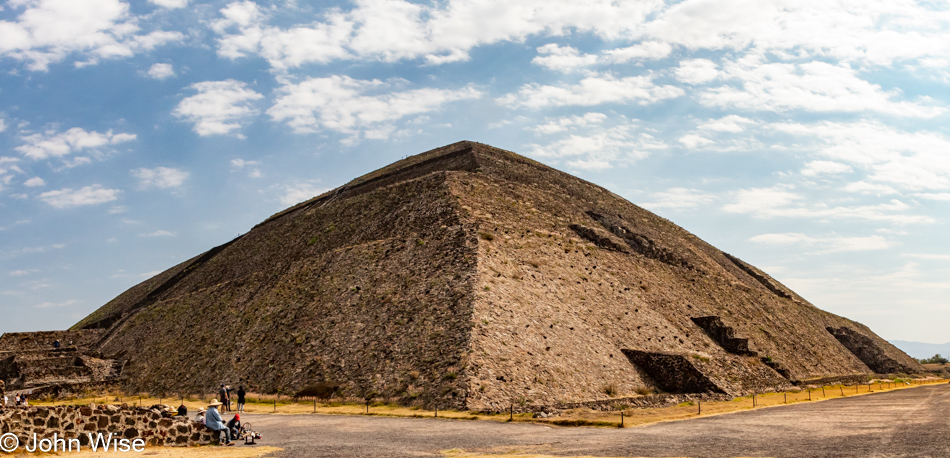
We are being overwhelmed by Mexico City, and today is only our second full day in the country. We needed to be up early today so as not to miss an important appointment, which meant that we had to rely on our hotel’s breakfast. I usually let this go by without mention, but our stay at the Wyndham Garden Hotel in the Polanco area deserves our respect as we opted for a Mexican breakfast and were not disappointed by the quality, how quickly it was delivered to our table, and especially the view of Chapultepec Castle which was the opening photo of yesterday’s post. Chapoltepēc is a Nahuatl word and means “on the hill of the grasshopper.”
But that pales in comparison to seeing the Temple of the Sun here at Teotihuacán. We arrived safe and sound out this way due to our incredible guide, Jose “Pepe” Avila. We’d booked a private tour of the area via GetYourGuide, which worked through Estigo for our private tour. I’d asked for someone knowledgeable about history, and they sent us a guy with an MBA that had him working between the US and Mexico, but now, at 60 and tired of that line of work, he’s returned to university to get a master’s in history and is presently working on his Ph.D. in history.
Our drive out to Teotihuacán took about an hour, and while we were excited to be visiting our first pyramid, we had no idea how crowded it would be, how big the complex was, or how much time we might need out here.
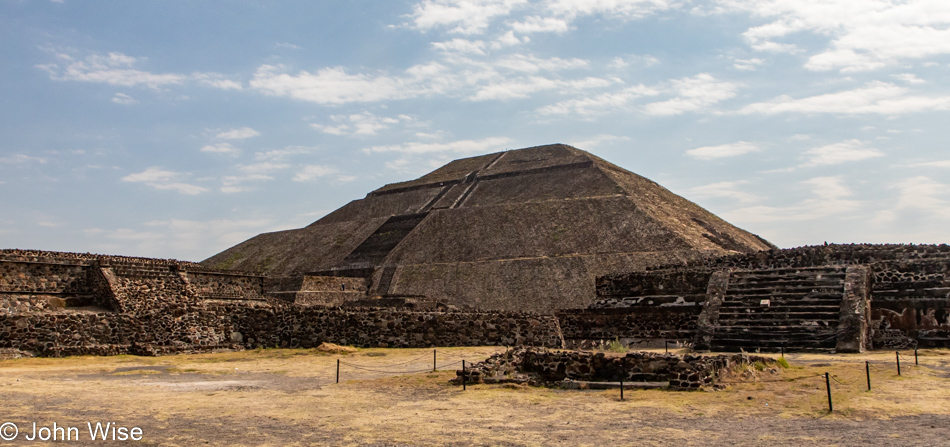
We arrived early enough that it nearly felt like we were alone. That sense of quiet isolation is amplified by the fact that because of the pandemic, nobody is allowed to scale the pyramids. While I was initially disappointed that we’d not be able to climb at least one of them ourselves, I quickly understood the beauty of seeing these incredible monuments without brightly dressed, screaming, selfie-taking idiots who want to believe that their visit to a pyramid is likely the most unique visit ever. I probably would have fit into that group, sans the bright clothes and screaming, had we been able to join a thousand others scattered about the face of the pyramid. Instead, we stood here in awe unable to comprehend in any kind of meaningful way where we are and the significance this place meant to people during the previous couple of thousand years prior to the arrival of mass media.
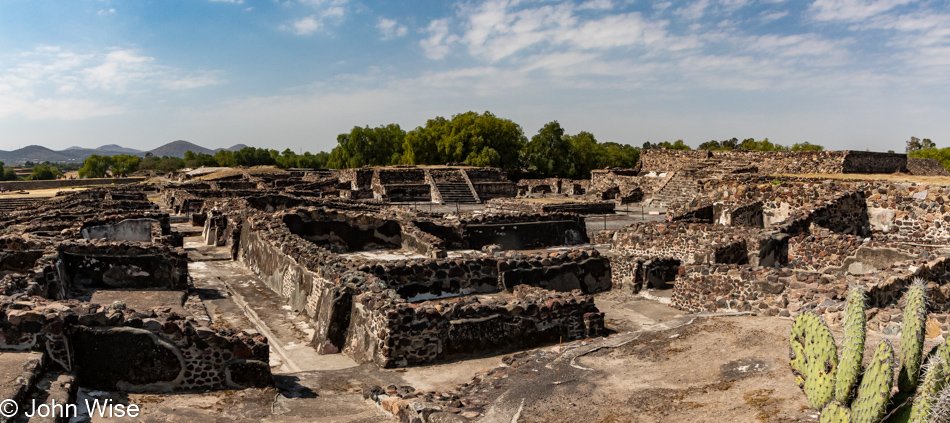
We don’t linger for long next to the Pyramid of the Sun and, turning our back on the Pyramid of the Moon, we are walking south on the Avenue of the Dead. At another time, our path would have us swimming through the artificial lakes that were designed into the complex that not only served the aesthetic of reflecting blue sky, billowy clouds, the temples and homes of the ancient Maya but also served the function of providing fresh water to those that lived here and watered their crops too.
By 400 A.D., the city of Teotihuacán was estimated to have had a population of about 150,000, which would have made it the 6th most populated place on earth at that time. By 750 A.D., the city was abandoned to the lizards.

The pyramid complex would sit silently for another 650 years before the Aztecs “discovered” it and named the place Teotihuacán meaning “The place where the gods were created.”
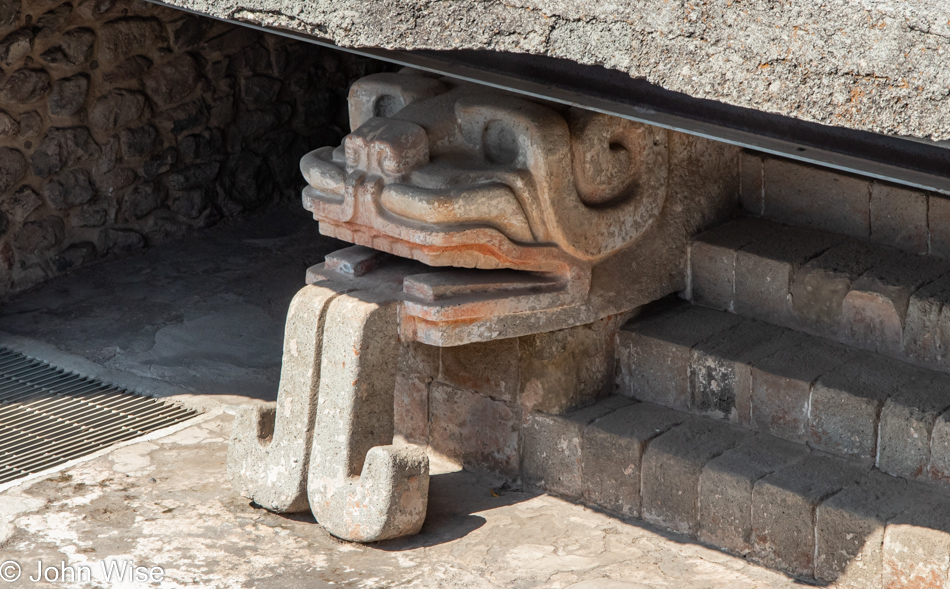
Other than the faded paint, this serpent statue looks like it might have thousands of years ago.

This one that was not protected from the elements is fading fast.
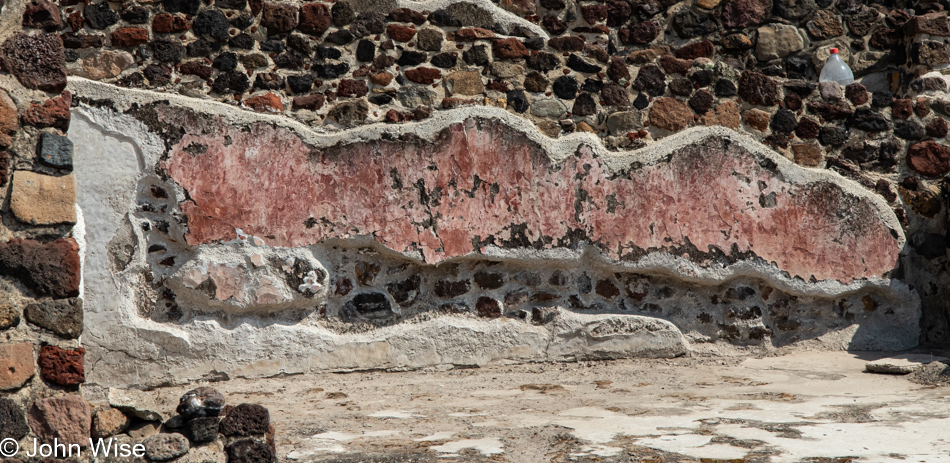
Only small amounts of the original painted stucco remain as it lays exposed baking in the sun.
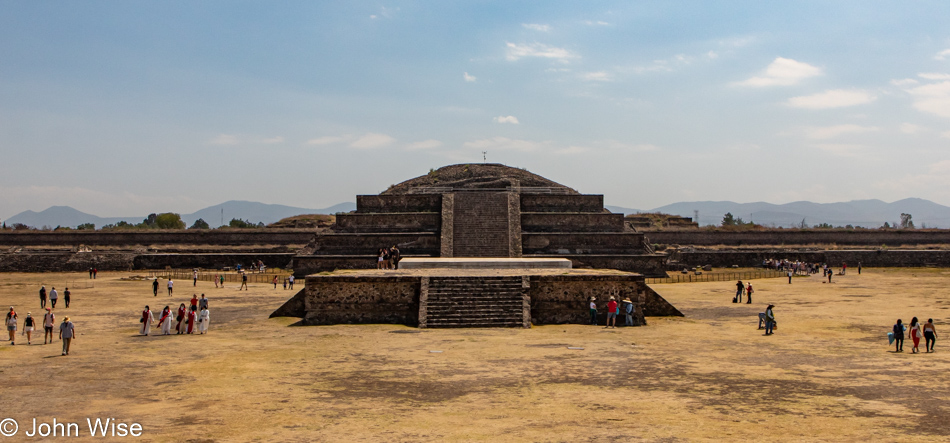
Temple of the Feathered Serpent also known as the Pyramid of Quetzalcóatl at the south end of the Avenue of the Dead. This was towards the end of the building cycle that happened here at Teotihuacán and was built into a Ciudadela or citadel. Behind the unnamed platform in the foreground is another platform people used to be able to climb; it is called the Adosada platform and offers overhead views of the stairs of the main temple. Today, all we can manage to eke out is the view I’m sharing below.
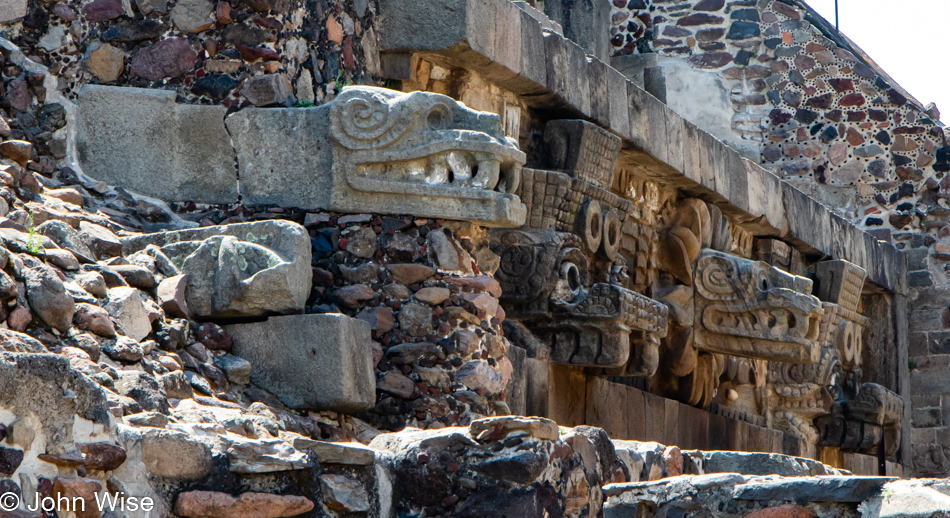
The area is off-limits and has been since before the pandemic, but I feel like I was able to get a halfway decent photo. By the way, our guide showed us images of a tripping Jim Morrison (The Lizard King) of the Doors fame communing with the Feathered Serpent. Getting back home and seeing how extensively grand the front of this temple is, I have to say we were robbed of one of the most spectacular sights anyone on earth might ever gather.
The construction of this complex was finished, according to some estimates, in the early 3rd century A.D. By then, the place that would be named Teotihuacán in the future was already about 700 years old and still 450 years away from being abandoned.
Heads of the feathered serpents used to adorn all sides of the temple. At one time, there were 260 of them, which led to the speculation that they correlated to the number of days in a Mayan calendar. Using a small placeholder in each head, the Mayans could track the day and by which head was prominent on a particular day; celebrations would easily be noted. With a citadel of this size, the entire population of the area could be brought in for festivities and ceremonial occasions that warranted such events.
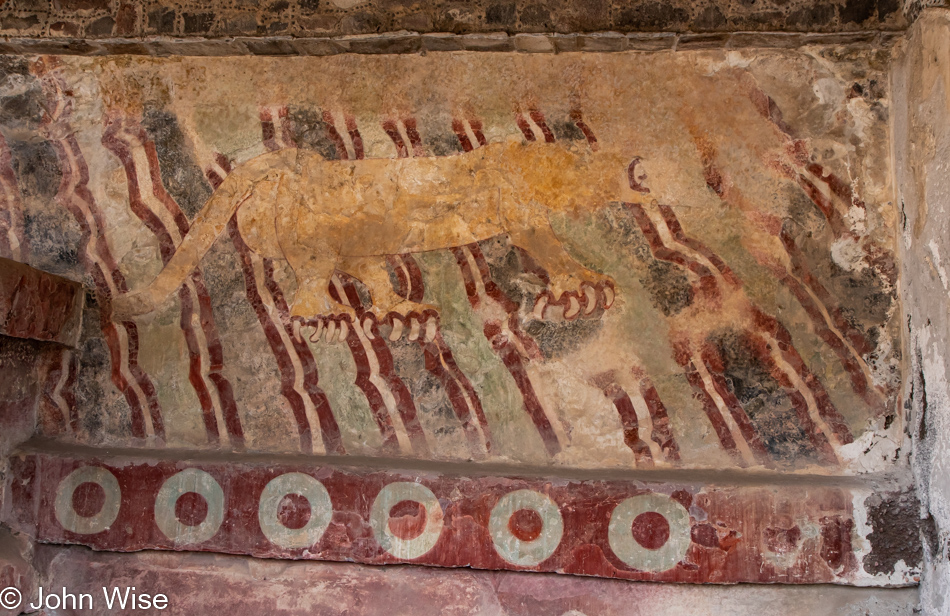
Having visited the crown jewels on our stroll along the Avenue of the Dead, we were on our way north towards the Pyramid of the Moon. A headless panther that has survived a vast passage of time is now protected from the weather by an overhang, and we are offered this incredible opportunity to see what is likely a 2,000-year-old painting.
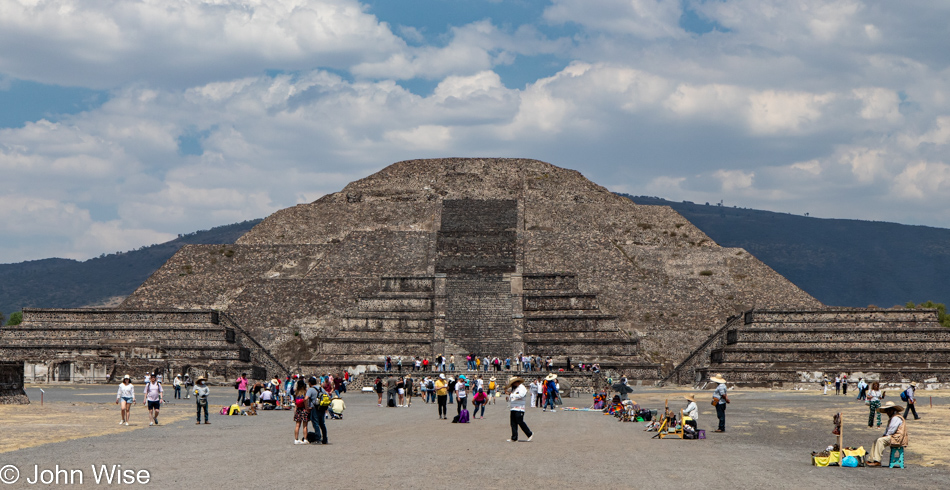
The Moon Pyramid is at the top of the Avenue of the Dead, standing in the shadow of the mountain Cerro Gordo.

Try as I might to learn something more about this structure; it appears to be nothing more than a viewing platform that was used to watch ceremonies occurring over on the nearby pyramid.
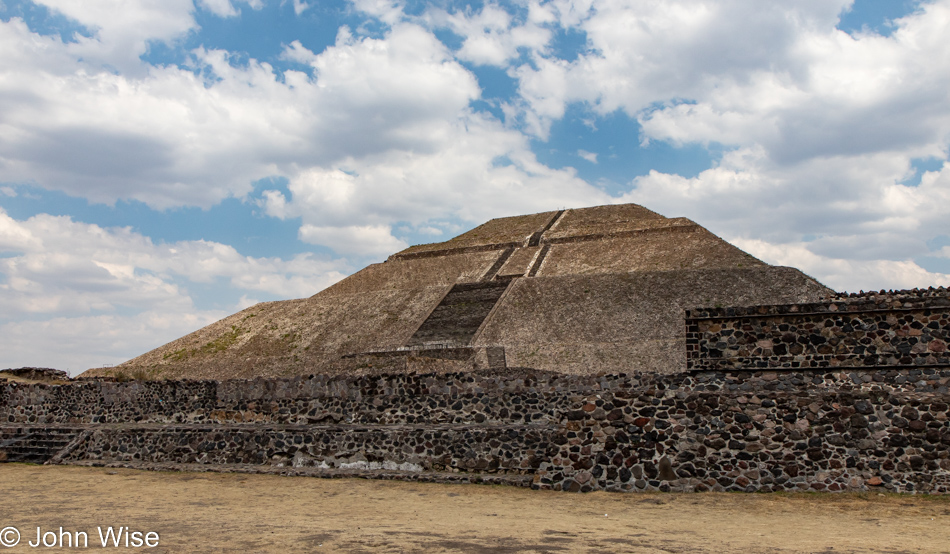
The Pyramid of the Sun at one time had another layer over the top of what we see today; a white lime plaster shell was painted in vibrant colors but has obviously not survived the passage of time. Then there was the intentional damage done to the pyramid in the name of science when a crackpot archeologist named Leopoldo Batres blasted large amounts of the south-facing side with dynamite in the early 20th century as he attempted to discover the foundation of the great structure.
I forgot to point out that we were nearly an hour late arriving at the pyramids due to a traffic jam on the way out here. The problem was related to protests by truckers. So, after four hours at Teotihuacán, we started heading for the exit as Pepe asked if we were hungry, and we were.

Just around the corner and in the shadow of the Pyramid of the Sun, we pulled into Restaurante Mayahuel. It’s great that our guide is familiar with these places and didn’t deliver us to some overpriced tourist joint, though aren’t we all tourists out here? Anyway, we feasted on an appetizer of escamoles teotihuacanos seen above. You are looking at black ant eggs harvested from underground nests on agave roots. These are served with chopped tomato, onion, green chile, nopales, epazote, and xoconoxtle (Mexican fig). The taste of egg was obvious, and our first experience of eating this kind of insect was a positive one.
Today, we also enjoyed our first-ever meal served in a stone mortar; it was called molcajete mayahuel. With beef, chicken, cecina (dried meat), chistorra (sausage), grilled nopales (cactus), onion, cheese, and tortillas, I think we could have eaten nearly anything this day as we stared out at the pyramid, incredulous, that this is our life.
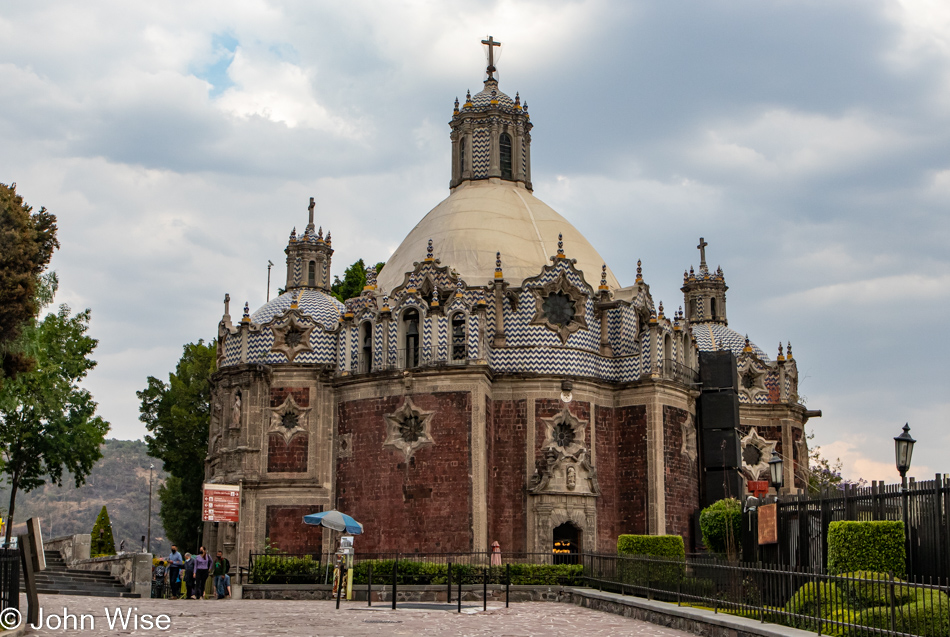
Here we are at the National Shrine of Mexico, the Basilica of Our Lady of Guadalupe. This photo is of the Capilla Del Pocito or Pocito Chapel, which is on the grounds of the shrine. We’ll get there in a moment. This baroque church started in 1777 and was built over the healing sulfurous waters of a well that today simply smells incredibly bad. Trust me, we’ve smelled sulfurous waters at Yellowstone National Park many times, and this stench is not that.
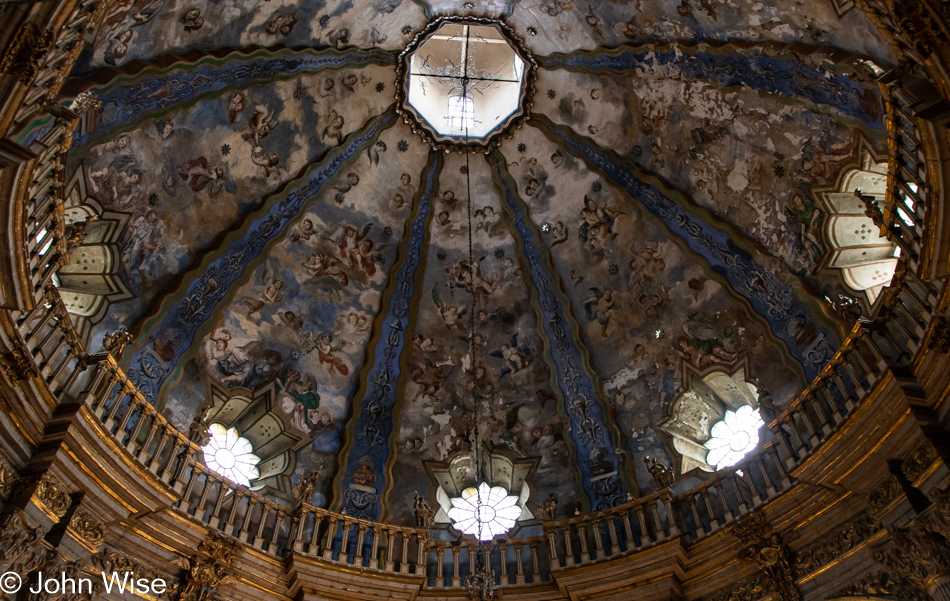
Bad air or not, the small chapel is beautiful, albeit sorely in need of renovations.
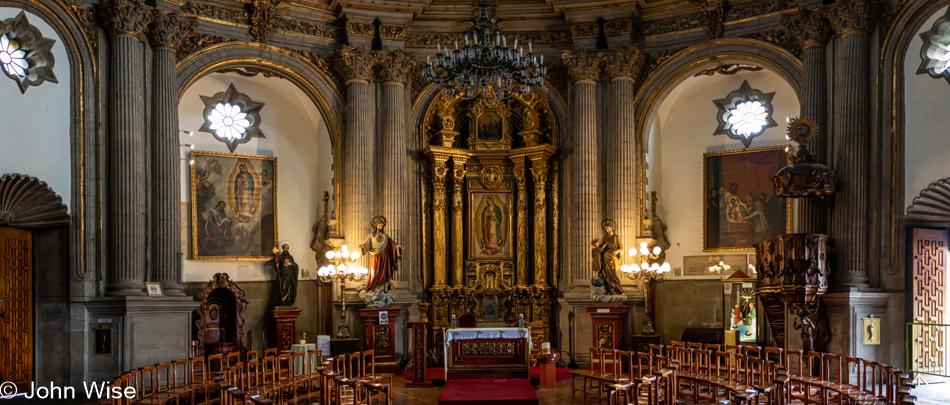
What you are not seeing in these images is that this building, like at least a couple of others nearby, is sinking. Of course, buildings don’t just sink without a reason, and these are no different. You see, much of Mexico City was built on the dry lake bed of Lake Texcoco, but the original settlement here called Tenochtitlan, founded in 1325 A.D. by the Aztecs was built on an island in the lake. After the Spaniards arrived in 1521 and saw an environment that challenged their ideas of European superiority, they drained the lake, flattened monuments, and did their best to erase a culture they weren’t prepared to contend with. Tenochtitlan was renamed Ciudad de México, and the rest is history.
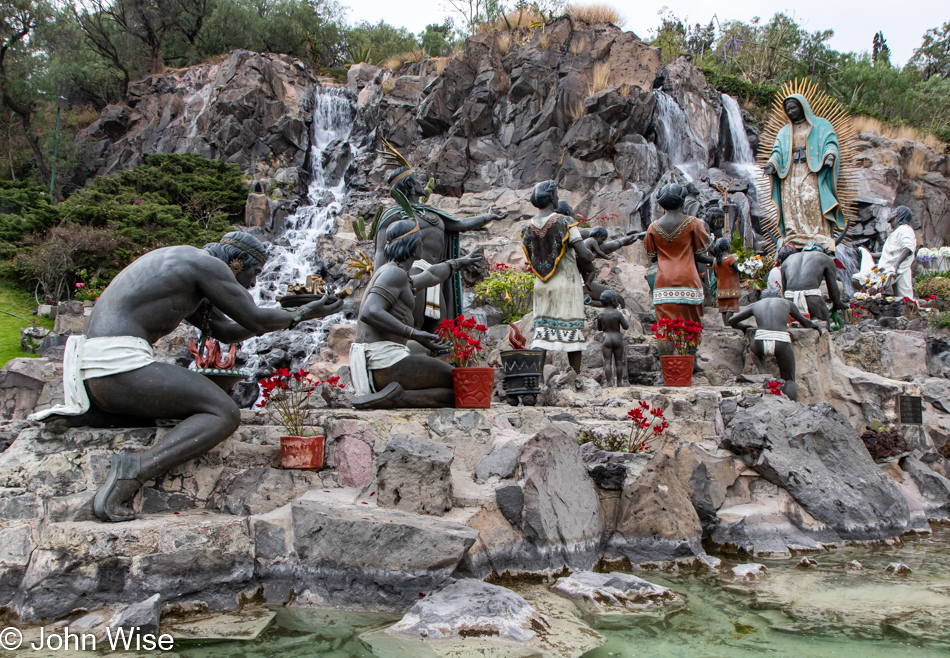
A new hybridized variation of Mexica and Spanish culture emerged, and as long as the indigenous population bowed down to the invading force, all was good. Until 300 years later, in 1821, Mexicans fought a revolution of independence from the Spanish overlords. By then, though the damage was done, the Náhuatl language was supplanted by Spanish (though it is not a dead language yet), the old religion was mostly gone, and the architectural vestiges were crushed.
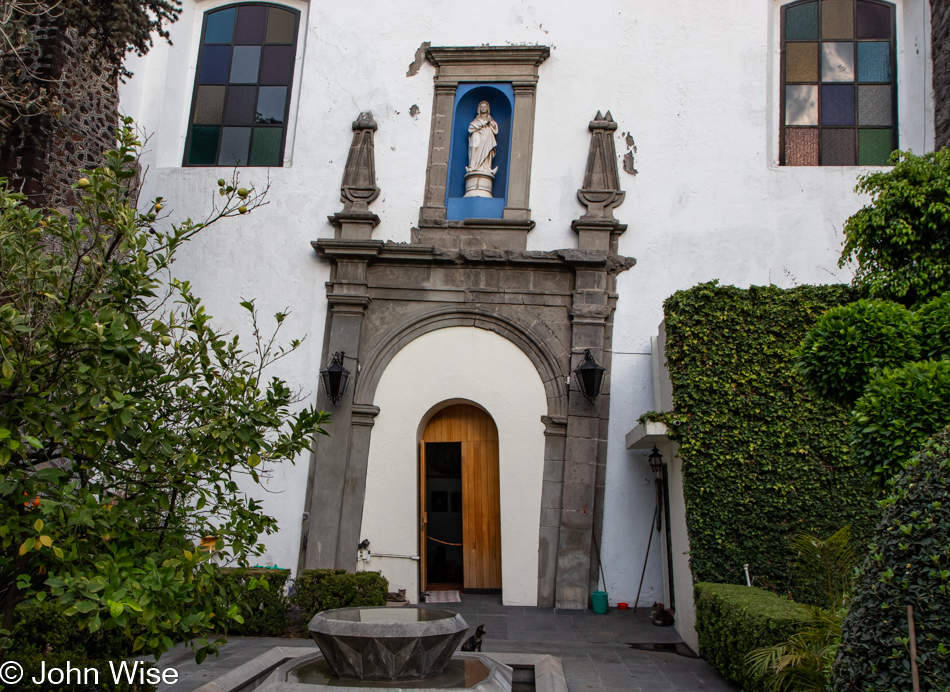
No, this wasn’t built this way as this building is sinking too and the door now there is new as obviously, the old one wouldn’t work any longer.
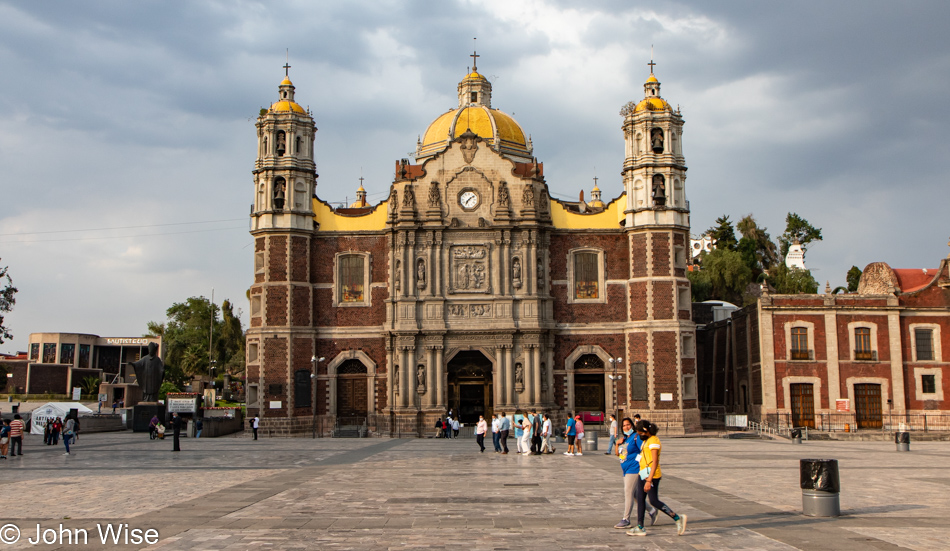
This is the original Basílica de Guadalupe, and it, too, is sinking into the earth. If it weren’t able to be stabilized, it would have certainly collapsed at some point. Before that happened, Mexico built a new modern basilica that we visited next.
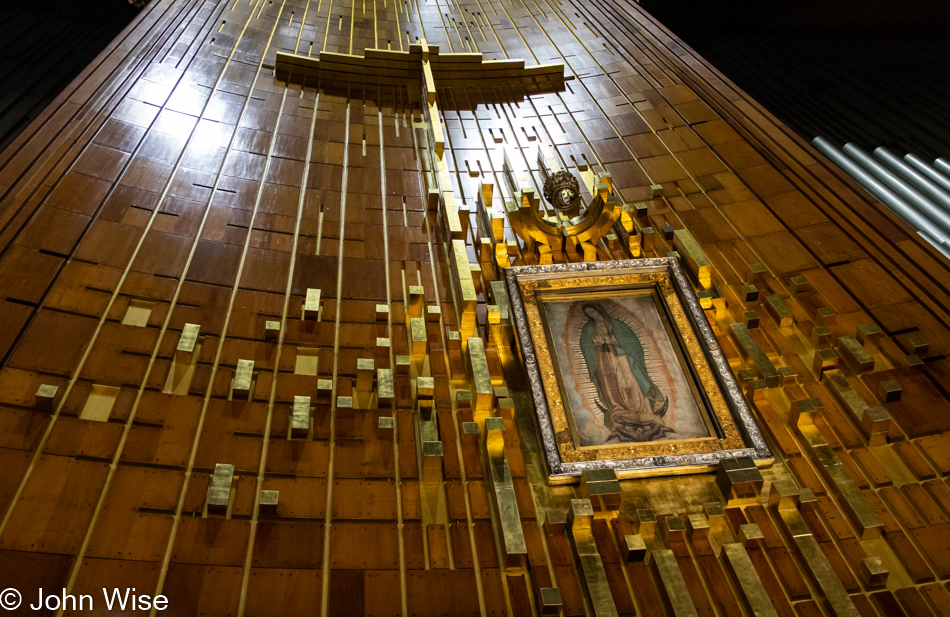
It is a difficult reconciliation when you stumble into witnessing truths about an ancient, beautiful, and creative culture that represented a threat to a conquering power, and now you walk through the devastation of what remains. During the period called modernity over the past 300 years, a cultural castration was committed, and the way was paved to eliminate the intellectual, creative power of a people that failed to fit a hegemonistic view of the small-minded that had little tolerance for those things they didn’t understand.